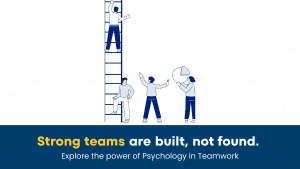Succession Planning
...
Businesses will be under increasing pressure due to an aging workforce, shrinking talent pool, and increased competition in the years to come. A key element of ensuring the seamless movement of talent within an organization is identifying crucial job skills, knowledge, social relationships, and organizational practices and passing them on to prepare the next generation of workers.
By conducting succession planning, a company ensures it will always have the right leadership in place if it has to undergo an abrupt change. In the absence of a planned succession, if a key individual quits the company or drops away, your company may not have the same opportunity in the future. Succession planning is not a one-time affair but needs to be re-evaluated and updated on an annual basis or as changes arise within the organization.
By conducting succession planning, a company ensures it will always have the right leadership in place if it has to undergo an abrupt change. In the absence of a planned succession, if a key individual quits the company or drops away, your company may not have the same opportunity in the future. Succession planning is not a one-time affair but needs to be re-evaluated and updated on an annual basis or as changes arise within the organization.
Benefits -
1. Long-term talent planning and retention.
One of the benefits of succession planning is that it increases employee retention by providing clear career growth opportunities. By providing organizations with a longer-term planning perspective, they can reduce their reliance on recruitment, so that they are only sourcing talent externally as a last resort.
When there is a chance for advancement and possibly ownership, employees feel empowered and satisfied with their jobs.
2. Protect the organization from sudden & unexpected change
The succession planning process ensures business continuity. In other words, the organization continues to exist even when key positions become vacant due to sudden changes like resignation, or retirement.
Businesses are often too caught up in the day-to-day to notice patterns affecting their workforce and also, replacing employees becomes much easier as positions become vacant. Employing succession planning will remove the dependents on external hiring and the cost attached to it, in terms of fees, and increasingly competitive salaries, and will help you to retain intellectual capital as well as earn employees’ loyalty.
3. Identifying Skills Gaps
Through risk analysis provided by succession planning, your workforce and skill base’s weaknesses and gaps will be exposed. Analyzing the present organizational structure in each department will allow you to identify areas of weakness that can affect your business strategy.
4. Training & Development.
Succession planning is essential for grooming and developing the next likely successor. The correct training enables the possible successor to strengthen his/her strengths and get through his/her deficiencies. Additionally, if he/she accepts the post, it prepares them for a variety of responsibilities and tasks.
5. Knowledge transfer and process refinement
Experienced workers who retire or leave the company after a lengthy career leave behind a wealth of information that is difficult to replace. Stopping this expense to the company and easing the transition of such changes are two goals of succession planning.
6. Decreases Employee Churn
Employees within organizations benefit from succession planning. In addition, it offers employees a variety of job roles to prepare them for higher positions in the future. In taking an interest in their career and personal development, the organization makes its employees feel valuable and important. Employee turnover is reduced as a result, and talented employees are retained.
Succession Planning Process

Conclusion
Succession planning entails developing an alternate leadership for a smooth transition of the organization when the top management changes.
Despite the upsides of succession planning, it is a double-edged sword. The process of succession planning in an organization is a time-consuming and tedious one for HR executives. It goes beyond just human resources management. In order to identify, shortlisting, and developing potential employees involves managing the data of all employees included in the succession plan.
Therefore, Top management should be involved with succession planning, the plan should be thoroughly reviewed, and each candidate should have their development plan outlined in writing.
Author
Ravi Kumar
Ravi is an Industrial & Organizational Psychologist. He is passionate about understanding the world of human resources. He enjoys reading about philosophical ideas from different cultures, sports, and digital art.
Related Post
Psychology of Teamwork – The Make Or Break Factor
admin
May 14, 2025


